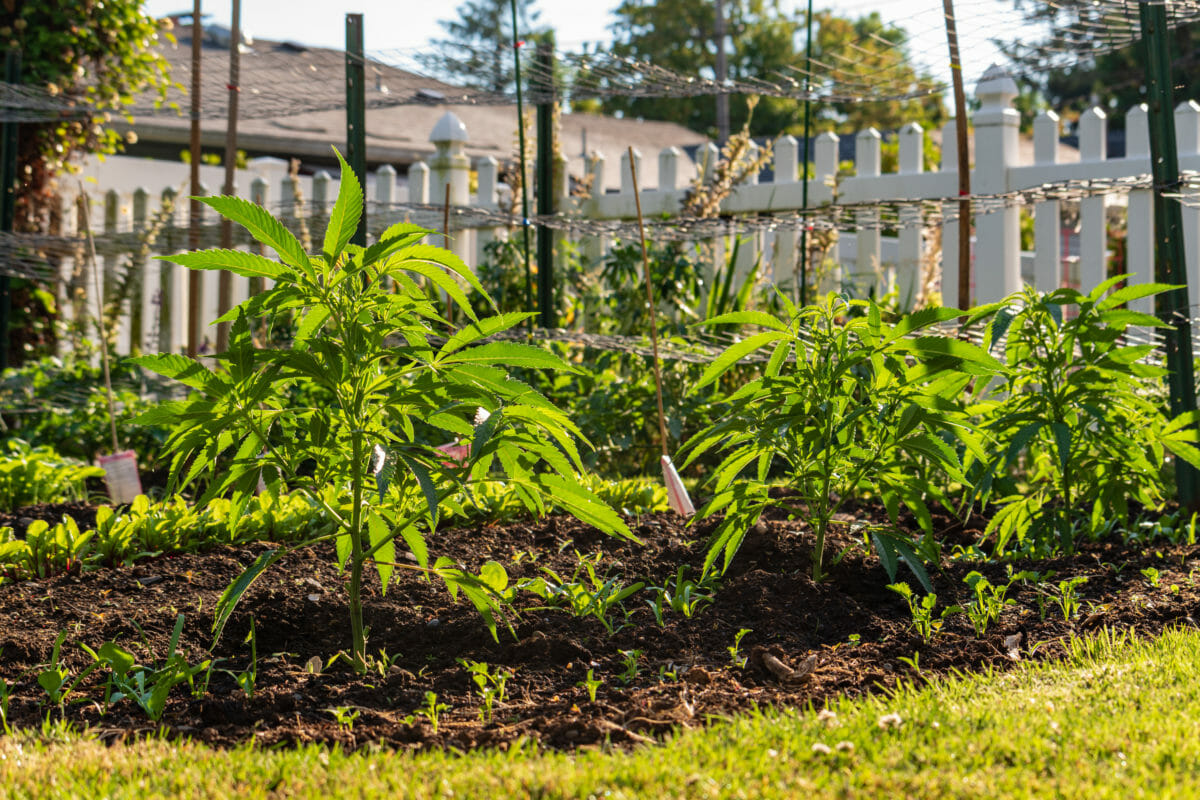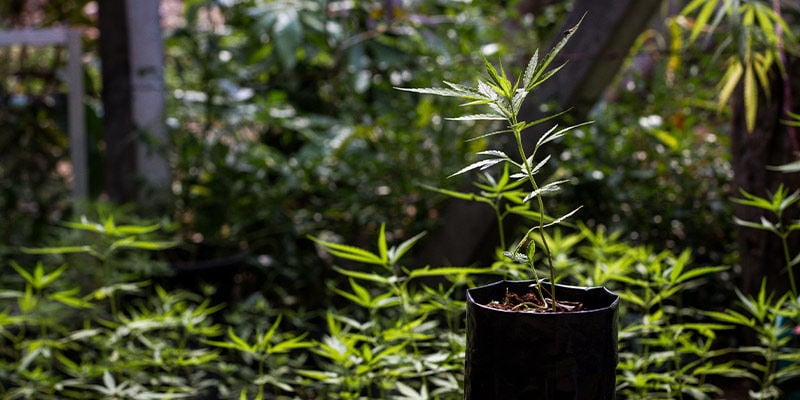Garden-Grown Cannabis: Tips for a Bountiful Harvest
Growing cannabis in a garden setting offers a natural and rewarding experience in your very own backyard. In this blog we will share some expert tips to help you optimize your garden-grown cannabis and make the most of this grow season.
Location, Location, Location:
Choose a sunny spot in your garden that receives ample sunlight throughout the day. Cannabis thrives in full sun, so aim for at least 6-8 hours of direct sunlight daily. Too much sun can scorch your plant, so take that into consideration as well.
Proper Spacing:
Give your cannabis plants plenty of room to spread out and receive adequate airflow. Space plants at least 3-4 feet apart to prevent overcrowding and minimize the risk of mold and mildew.

The Foundation:
Choosing the right soil is paramount for nurturing healthy cannabis plants. Opt for a well-draining, nutrient-rich soil mix specifically formulated for cannabis cultivation. Look for blends that contain perlite, coco coir, and/or peat moss for optimal aeration and water retention. Avoid heavy soils that compact easily, hindering root development and oxygenation. Test the pH of your soil blend and adjust if necessary to ensure it falls within the optimal range for cannabis (around 6.0-7.0).
Enrich your garden soil by adding organic matter such as compost, aged manure, and/or worm castings. Consider using additional fertilizer high in nitrogen, phosphorus, and potassium (NPK) in varying ratios throughout the plant’s life cycle. This enhanced nutrient availability translates into healthier, more vigorous growth, ultimately leading to higher yields and potency in cannabis plants. Incorporating these amendments improves soil structure, fertility, and microbial activity, providing a rich foundation for your cannabis plants to thrive.

Mulching:
Apply a layer of organic mulch, such as straw, wood chips, grass clippings, or shredded leaves, around your cannabis plants to conserve soil moisture, suppress weeds, and regulate soil temperature. Mulching also helps improve soil structure and fertility over time as it breaks down.
Watering:
Water your garden-grown cannabis plants deeply but infrequently, allowing the soil to dry out slightly between waterings. Overwatering can lead to root rot and other moisture-related issues, so err on the side of underwatering rather than overwatering.
Pest and Disease Management:
Keep a close eye on your garden for signs of pests and diseases, and take proactive measures to prevent infestations. Companion planting with insect-repellent herbs and flowers, such as marigolds, basil, and lavender, can help deter pests naturally. Additionally, practicing good garden hygiene, such as removing dead or diseased plant material, can reduce the risk of fungal diseases and pest outbreaks. It is important to emphasize the importance of early detection and intervention when dealing with pests and diseases to prevent them from spreading and causing significant damage to the plants.
Trim and Train:
Regularly prune your cannabis plants to remove dead or yellowing foliage and promote airflow through the canopy. Consider implementing low-stress training (LST) techniques to encourage lateral growth and increase bud sites. LST involves gently bending and securing the main stem or branches of the cannabis plant to encourage horizontal growth and create an even canopy. This method ensures that all branches receive adequate light exposure, encouraging consistent growth rates among them. This approach maximizes your garden's yield potential and improves overall plant health. Ensure you use appropriate materials to avoid inadvertently harming your plant.

Harvesting:
Commence the flush phase for your plants during the final two weeks of the growth cycle. No additional fertilizers should be used during this period, allowing the plant to draw from its stored nutrients and mature properly. Monitor your cannabis plants closely for signs of maturity, such as swollen calyxes, milky or amber-colored trichomes, orange pistils, and a strong aroma. Harvesting at the right time ensures optimal potency and flavor. When ready, carefully trim the buds from the plants using sharp, clean pruning shears, then hang them upside down in a well-ventilated, dark area to slowly dry. Once the buds are dry to the touch you can then thoroughly trim the buds, removing stems and leaves. Put the buds in an airtight container or jar for curing, remembering to “burp” the container a few times daily to release excess moisture.
By following these expert tips, you can cultivate healthy, vibrant cannabis plants in your garden and enjoy a bountiful harvest of high-quality buds. Happy gardening puff-buffs!






